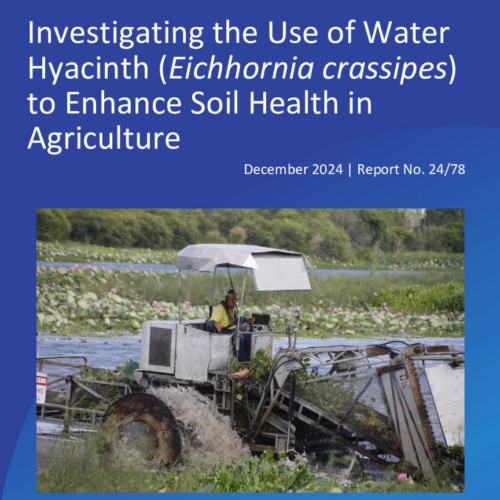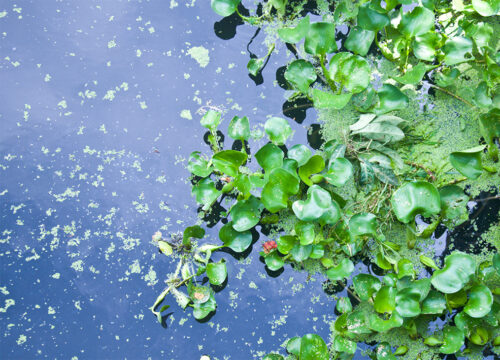
- Author Adam Canning - TropWater James Cook University
- Publish date 26 November 2024
- Type Report
- ISBN 978-1-922437-58-7
- Documents
- Water: Making Water Work program
Summary
This study investigated the use of water hyacinth (Eichhornia crassipes) as an organic mulch for agricultural soils. Water hyacinth is a nutrient-rich, fast-growing invasive species, and its use as mulch could provide an alternative to traditional amendments. The research assessed its effects on soil microbial diversity, functional traits, and ecosystem services, such as nutrient cycling, organic matter decomposition, and pathogen suppression.
The study was conducted at three sites in Rockhampton, Queensland: a macadamia orchard, a lychee orchard, and a grazing pasture. Treatments included water hyacinth mulch, woody mulch, and no-mulch control, with and without urea application. Soil samples were analysed for microbial diversity, community composition, and functional traits.
Vegetation type strongly influenced microbial diversity and functional traits. Macadamia orchards supported higher microbial diversity and traits related to nutrient cycling and decomposition. Lychee orchards had reduced ectomycorrhizal diversity and shifts in decomposition traits, possibly due to competitive interactions or management practices.
Water hyacinth mulch increased microbial traits related to rapid nutrient cycling and decomposition, such as arbuscular mycorrhizal and chitinolytic diversity. Woody mulch favoured traits associated with organic matter stabilisation and nematode suppression. Woody mulch also increased the diversity of opportunistic human pathogens, raising biosecurity concerns.
Water hyacinth mulch improved soil microbial diversity and functions but showed variability depending on vegetation type and soil conditions. The results suggest that mulch type should be chosen based on specific agricultural and environmental needs.
Projects
Making Water Work : Integrating nutrient, waste and energy streams in agriculture development through hyacinth harvest and processing
Water hyacinth is an invasive aquatic weed introduced into the Fitzroy River in Central Queensland as an ornamental plant. However, once hyacinth enters waterways its long-term impact is significant due to the rate of growth, density of biomass and seed life. This project will seek to identify and evaluate methods for the beneficial reuse of water hyacinth in the Fitzroy River, including as a vector for the removal of nutrients from the waterway to improve water quality flowing to the Great Barrier Reef.


